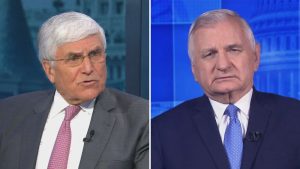Understanding Trump’s Tariff Strategy: A Balanced Perspective
Donald Trump’s implementation of reciprocal tariffs is a strategic move aimed at addressing the United States’ nearly trillion-dollar trade deficit, which he believes is detrimental to American jobs. By imposing tariffs on imports from countries that tax US exports, Trump seeks to level the playing field and encourage domestic production. This approach targets major trading partners like Mexico, Canada, the EU, and BRICS nations, with specific ire directed at the EU’s 10% tariff on US cars.
Potential Impact on Global Industries
The strategy aims to reinstate industries such as chip production and automotive manufacturing, which have shifted overseas. While this may boost domestic industries, the feasibility of relocating complex global supply chains remains questionable. The tariffs could lead to a trade war, increasing consumer costs and complicating international trade relations.
Brexit and the UK’s Position
The UK’s post-Brexit flexibility might allow it to navigate these tariffs more effectively, though it’s still vulnerable due to VAT on imports. A 2021 deal reduced direct tariffs, but Trump’s consideration of VAT as equivalent to tariffs poses risks for British exporters, underscoring the uncertain impact on the UK.
Economic and Inflationary Concerns
Analysts warn of a 21% increase in export costs, potentially costing the UK £24 billion. This inflationary effect could raise US consumer prices, impacting Trump’s popularity. Key industries like pharmaceuticals and aerospace may face significant challenges, with possible pushback from powerful lobbying groups.
Strategic Implications and Global Impact
The confrontational approach risks straining international relations and triggering retaliatory measures, potentially harming the global economy. The interconnected nature of trade suggests far-reaching consequences beyond immediate partners.
Conclusion and Future Outlook
Trump’s gamble aims to protect American jobs but carries risks of inflation, trade wars, and economic slowdown. The April reveal of detailed measures will clarify the situation, but current uncertainty may already be affecting business and investment decisions. The administration’s ability to navigate these challenges without exacerbating economic harm will be crucial in the coming months.















